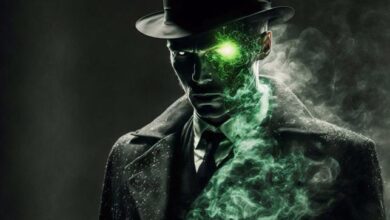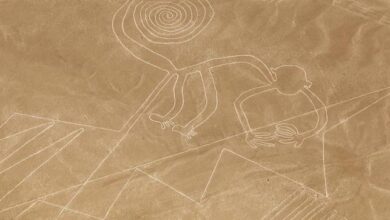And I’m Not Thinking of Nessie
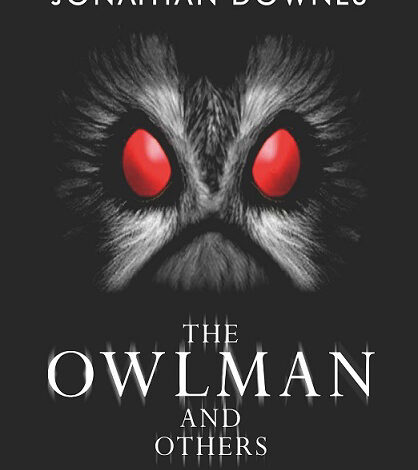
When it comes to the subject of monsters in the U.K., most people probably think of the Loch Ness Monster(s). But, there’s more than just Nessie when it comes to monsters in the U.K. With that said, let’s have a look at them. We’ll begin with the English version of the United States’ Mothman: it’s name is Owlman. In 1976 the dense trees surrounding Mawnan Old Church, Cornwall, England became a veritable magnet for a diabolical beast that was christened the Owlman. The majority of those that crossed paths with the creature asserted that it was human-like in both size and design, and possessed a pair of large wings, fiery red eyes, claws, and exuded an atmosphere of menace. No wonder people make parallels with Mothman. It all began during the weekend of Easter 1976, when two young girls, June and Vicky Melling, had an encounter of a truly nightmarish kind in Mawnan Woods. The girls were on holiday with their parents when they saw a gigantic, feathery “bird man” hovering over the 13th Century church. It was a story that their father, Don Melling, angrily shared with a man named Tony “Doc” Shiels. I say “angrily” because Shiels was a noted, local magician who Melling came to believe had somehow instigated the whole affair. Or as Shiels, himself, worded it: “…some trick that had badly frightened his daughters.” Shiels denied any involvement in the matter whatsoever. But that was only the start of things.
Another one to see the Owlman was Jane Greenwood, also a young girl. She wrote a letter to the local newspaper, the Falmouth Packet, during the summer of 1976 that detailed her own startling encounter: “I am on holiday in Cornwall with my sister and our mother. I, too, have seen a big bird-thing. It was Sunday morning, and the place was in the trees near Mawnan Church, above the rocky beach. It was in the trees standing like a full-grown man, but the legs bent backwards like a bird’s. It saw us, and quickly jumped up and rose straight up through the trees. How could it rise up like that?” Two fourteen year old girls, Sally Chapman and Barbara Perry, also had the misfortune to have a run-in with the Owlman in 1976. At around 10.00 p.m., while camping in the woods of Mawnan, and as they sat outside of their tent making a pot of tea, the pair heard a strange hissing noise. On looking around, they saw the infernal Owlman staring in their direction from a distance of about sixty feet. Sally said: “It was like a big owl with pointed ears, as big as a man. The eyes were red and glowing. At first I thought that it was someone dressed-up, playing a joke, trying to scare us. I laughed at it. We both did. Then it went up in the air and we both screamed. When it went up you could see its feet!”
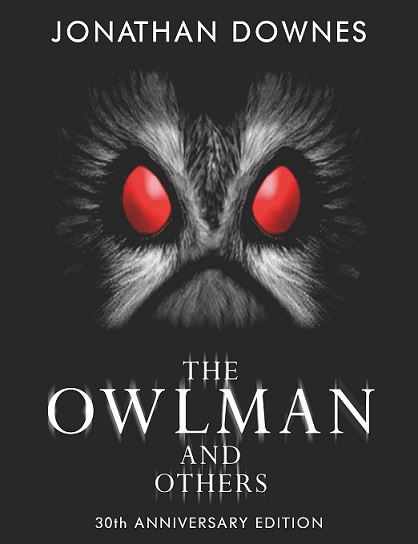
While there were rumors of additional sightings of the creature in the immediate years that followed, it wasn’t until the summer of either 1988 or 1989 that the Owlman put in an appearance that can be documented to a significant degree. In this case, the witness was a young boy, dubbed “Gavin” by a good friend of mine, Jon Downes (who wrote an entire book on the winged monster, titled The Owlman and Others), and his then girlfriend, Sally. The beast, Gavin told Jon, was around five feet in height, had large feet, glowing eyes, and significantly sized wings. It was a shocking, awe-inspiring encounter that Gavin and Sally never forgot. As was the case in the immediate post-1976 era, a few reports from the 1990s and 2000s have surfaced. Chiefly, however, they are from individuals who prefer not to go on the record – something which has led to understandable suspicions of fakery and hoaxing. But, one could also make a very good argument that going public about having seen a monstrous “birdman” in English woodland would not be the wisest move to make. Today, and getting ever-closer to 40 years since the original encounters occurred, the matter remains the undeniable controversy that it was back then. For some researchers, Doc Shiels is the man to blame. They perceive him as a trickster, a faker and someone not to be trusted. Jon Downes, however, suggests something else – something with which I concur.
Namely, that Shiels – dubbed the “Wizard of the Western World” – has profound knowledge of “magic.” And by that, I don’t mean people pulling rabbits out of hats. We are talking, here, about something far stranger, something ancient, and something filled with swirling mystery. In a review of Doc’s excellent book, Monstrum, I noted: “[Doc’s] is a world filled with a deep understanding of the real nature of magic (chaos and ritualistic), the secrets of invocation and manifestation, of strange realms just beyond – and that occasionally interact with – our own, and Trickster-like phenomenon. Doc’s is also a domain where, when we dare to imagine the fantastic, when we decide to seek it out, and when we finally accept its reality, we perhaps provide it with some form of quasi-existence.” Perhaps Doc, in a decidedly strange way, really did play a role in the formation of the Owlman legend. But, such was the allure of the beast it quickly stepped out of the world of imagination and story-telling, and right into the heart of the real world. And on that last point, be careful what you wish for, lest you unleash into our reality a monster that has no intention of returning to that domain from which it was originally created, imagined, or invoked.
Now, onto the Bodalog monster, a very strange and sinister saga: Rhayader is the oldest town in mid-Wales. Its origins date back more than 5,000 years, and specifically to Neolithic times. Rhayader’s long legacy is also evidenced by the fact that, in 1899, a large collection of gold jewelry was found buried on the town’s Gwastedyn Hill. Archaeologists were able to date the priceless artifacts to the 5th century and link them to a princess named Rowena. She was the daughter of a local, powerful, warlord, Hengest, and someone who married a much-feared character known as High King Vortigen. Neither Hengest nor Vortigen were able to instill as much fear in the people of Rhayader as did a deadly and mysterious beast that surfaced in 1988. It was between September and December 1988 that the town was hit by a spate of mysterious deaths. Not, thankfully, of people, but of sheep. Although several farms were targeted by the stealthy predator – and always under cover of darkness – it was the Bodalog Farm, owned by the Pugh family that suffered most of all. Over the course of several weeks, they lost close to forty sheep to the deadly intruder. Oddest of all: the sheep were not eaten, whether in whole or in part. The only evidence of the attacks were deep, penetrating bites to the sternum.

That was when the conspiracy theories began to take hold. There were claims of a local police cover-up. The stories grew and grew, amid claims that “Men in Black”-style characters from “the government” were roaming around town, doing their utmost to silence those with knowledge of the attacks. Supposedly, there was good reason why the MIB wanted to stifle all the talk of the deaths: the sheep had been drained of blood, vampire-style. Inevitably, and despite the best efforts of the MIB, the British media soon latched onto the story and it made the headlines across some of the nation’s major, daily newspapers. As the death rate increased, so did the wild rumors: there was talk of a large, black cat in the area – such as a black leopard. Of course, such animals are not native to the United Kingdom, something which only added to the mystery. Plus, no-one actually saw the big cat, if that is really what it was. It was simply a theory – but, undeniably, one that provoked a great deal of food for thought in the town’s pubs on weekend nights. With concern growing, a decision was taken to use foxhounds to try and chase the monster of the early hours. And this is when things became decidedly intriguing – and sinister, too.
The dogs soon picked up on the scene – their wild behavior made that very clear. They picked up on something else, too; something that had previously been overlooked. In certain parts of the fields where the sheep had been killed, corridors of flattened ground were uncovered. They gave every indication of something not walking along the fields, but slithering along them. In mere moments, all the talk of big cats was gone. In their place were giant snakes. On top of that, and as the dogs continued to chase down the scent, they were led to the banks of the 134-mile-long River Wye, the fifth longest river in the UK. The conclusion was all but inevitable: some form of large, unknown water beast was – undercover of the night – surfacing out of the depths of the river, stealthily crossing the fields, and feeding on the blood of the unfortunate sheep. But what could the creature have been? Certainly, there are no large snakes roaming around the UK. Yet, the flattened areas of field suggested a beast somewhere around twelve-to-fifteen feet long had indeed been slithering around. Richard Freeman, of the England-based Center for Fortean Zoology, took a lot of interest in the case when it surfaced. He said of the snake theory:
“Britain’s only venomous snake, the adder, Vipera berus, is far too small to have killed the sheep. This case begs many odd questions: why would an animal go to all the trouble of wasting venom and energy killing so many sheep, then not eat any? If it was a large, exotic, venomous snake that had escaped from captivity, how did it cope with October in Wales?” Freeman’s question was – and still is – an important one, as snakes require warm climates in which to survive and thrive. There is nothing warm about mid-Wales in October! Perhaps aware that it was being hunted down, the creature ceased its violent killing spree in early December 1988, and Rhayader finally returned to normality and there were collective sighs of relief all around town. Decades later, the mystery of what that water-borne monstrosity was remains precisely that: a mystery. There is, however, one last thing to muse upon: in 1912, Ella Leather penned a book titled The Folk-Lore of Hertfordshire. It told of how, centuries ago, people local to the River Wye believed that the river was home to something terrifying that required a human sacrifice once a year, as a form of appeasement and to ensure that the beast did not launch an all-out, murderous rampage around the area. Based on what happened in Rhayader in 1988, perhaps the old legends had a basis in terrifying, savage fact. Moving on…
In June 2015, a monster-sized fish was spotted by two astonished and terrified anglers on the River Nene, in the Fens, Cambridgeshire, England. One of the fishermen told BBC Radio Cambridgeshire: “I enjoy going out on my boat. One day we were on our boat going up towards Whittlesey and the boat suddenly juddered as if there was something large in the water. My friend and myself looked at each other and I looked down to see what we had hit. I saw the most extraordinary thing. I saw the biggest fish I have ever seen in my life. I like boating and I like wildlife, but I had never seen a fish like this before. It was absolutely huge – it was over six-foot long. It was swimming alongside us and our boat had struck it and it was as if it was showing us the side of itself where the propeller had hit it and we could see the white flesh. My friend saw it and exclaimed ‘Blimey is that a dolphin?’ It was so big. We’re going to go out again this year and see if we can see it.”
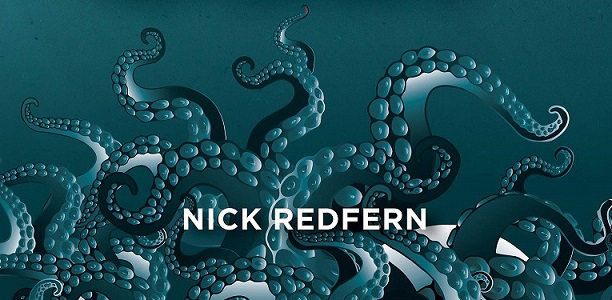
The two men speculated that what they had seen was a sturgeon. Not an impossibility, since sturgeon can grow to impressive sizes. But, the catfish was also offered as a potential candidate – echoing the Center for Fortean Zoology’s experiences at Martin Mere in 2002 (see Monster of the Mere). Then there was the theory that the creature was a giant eel, a creature that, on occasion, has been suggested for the Loch Ness Monsters. The witness was forty-one-year-old Michelle Cooper, who was prompted to come forward by the June 2015 encounter. Her sighting, however, occurred one year earlier. She spoke out to the Cambridge News: “I told people about it last year and they just took the mickey but now that these anglers have seen it too I know what they mean by being terrified. I am 5ft 4 inches tall and it was bigger than me. The water was crystal clear and I had a good look at it. I didn’t see any white like the fishermen. “I saw dark brown and when I researched what it could I found it looked exactly like the giant eels you get in America. I was really shaken up by it. It was terrifying but I don’t think it would hurt anyone. It seems to just stay low down on the river bed. It was so big it did create a wave and knocked my boat. I’ve seen pike and catfish and it definitely wasn’t that. I went for my camera to get a picture of it but it moved too fast and was gone before I could get a shot.” Whatever the true nature of the immense leviathan, its identity remains unknown. And here comes another U.K. monster you may not have heard of:
Deep in the heart of North Wales there exists a large expanse of water called Lake Bala. You may say, well, there’s nothing particularly strange about that. You would be correct. Lake Bala is not out of the ordinary, in the slightest. But what is rumored to dwell in its dark depths most assuredly is out of the ordinary. It’s the domain of a violent lake monster called Teggie. Or, is the story born out of secret, military experiments? It all very much depends on who you ask and who you believe. Before we get to the matter of Teggie, it’s worth noting that within Lake Bala there lurks a creature called the Gwyniad. It can hardly be termed a monster, as it’s just a small fish. But there is one issue concerning the Gwyniad that does have a bearing upon the matter of Teggie. The Gwyniad is a fish that dates back to the prehistoric era and is found in Lake Bala and nowhere else – at all. This has, quite naturally, given rise to a thought-provoking question: what else of a prehistoric nature might be in Lake Bala? And how big might it grow? The questions are intriguing. The answers are even more so. Whereas sightings of the Loch Ness Monster date back more than 1,500 years, Lake Bala’s resident unknown beast has only been reported for just over a century. Some locals, who claim to have seen the Teggies at close quarters, say the creatures resemble huge, violent, northern pike. They are ferocious fish that can easily grow to four feet in length; occasionally five; and, rumor has it, even six. If, however, the Teggies are northern pike, then they would have to be true giants, since witnesses claim that the creatures they encountered were in the order of ten to fifteen feet. No-one, surely, needs telling that a too close encounter with such a creature would result in a swift and bloody death – but not for a Teggie, though.
Then there are the equally baffling reports of a reptilian monster that vaguely resembles a crocodile. Such a scenario is unlikely, as a colony of crocodiles would stand little chance of adapting to, and surviving, a harsh North Wales’ winter – never mind untold numbers of centuries of such winters. There is, however, a third theory for what the Teggies might be. It’s just as strange and controversial as the crocodile and northern pike scenarios, but in a very different fashion. There are longstanding rumors in and around the Bala area that in the build-up to the First World War, the British Royal Navy clandestinely let loose a group of seals into the lake. The reason: to strap them with dynamite and train them to attacks specific targets, namely warships. It should be noted that the dynamite was not real and the “warships” were just small rowing boats. In other words, the project was a test-run, in the event that the Royal Navy might find itself at war with Germany (which it did in 1914, when the First World War broke out), and suicidal seals, strapped with explosives, might be required to fight for their country. So the story goes, the seals proved impossible to train, and the project was abandoned. And, so today, what people are seeing today are brief glimpses of the original seals that bred and bred and so on. Of course, it’s very possible this is nothing more than a tall tale, passed on through the generations and without any actual facts to support it. And, it must be said, it would be very difficult to mistake a seal for a crocodile or a huge, violent pike. Thus, the legend of Teggie continues to thrive.
And, finally, there’s the Shug Monkey of Rendlesham Forest. Yes, there are more than just UFOs in the forest. Any mention of the mysterious locale that is Rendlesham Forest, Suffolk, England inevitably conjures up strange and surreal images of the famous, alleged UFO landing within the forest in the latter part of December 1980 – a startling event witnessed by numerous United States Air Force personnel stationed at a nearby military base, Royal Air Force Bentwaters. The bizarre affair has been the subject of a considerable number of books, numerous televisions shows, several investigations by military and governmental bodies, and unrelenting deep debate. Reports of strange lights, of small alien-like creatures seen deep within the heart of the woods, and of high-level cover-ups and sinister conspiracies, are all key ingredients of the case that has, for many, justifiably become known as the “British Roswell.” More than three decades on, the events in question continue to provoke intense debate and controversy, with some believing that extraterrestrials really did land on British soil on that fateful night, or as some believe, across the course of several nights. Others hold the view that everything can be attributed to mistaken identity (of a nearby lighthouse, no less!), while some prefer the theory that a dark and dubious military experiment, and subsequent disastrous mishap, may have been to blame for all of the fuss.
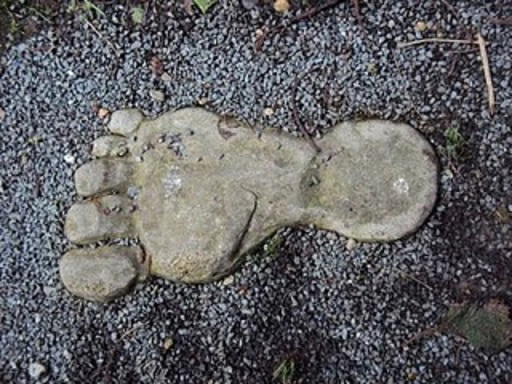
As for the forest itself, it covers an area that is around 1,500 hectares in size and can be found in Suffolk’s coastal belt known as the Sandlings. It is comprised of large, coniferous trees, as well as heath land and wet land areas, and is home to the badger, the fox, the red deer, the roe deer and the fallow deer. According to some people, however, Rendlesham Forest is home to far weirder things, too. Maybe, even, a strange form of British Bigfoot. Rendlesham Forest, as well as the Suffolk locales of West Wratting and Balsham, is the domain of a beast that, locally, has come to be known as the Shug Monkey. Described as being a bizarre combination of large ape, giant dog, and muscular bear, the creature is said to take its name from either (a) an old English word – scucca – which means demon; or (b) an old east-coast term – shucky – that translates, into modern day terminology, as hairy or shaggy. Maybe, and perhaps more likely, the name is even born out of a curious melding of both terms. But, whatever the true nature of the name applied to the foul, hairy entity, its presence in the woods of Suffolk is enough to strike deep terror into the hearts of those souls unfortunate enough to have crossed its path – which is something to which Sam Holland can most definitely attest.
Shortly after New Year’s Day in 1956, Holland was walking through the Suffolk countryside with his spaniel dog, Harry, when he was horrified to see a bizarre-looking creature come looming out of the trees some forty feet in front of him. It walked upon four huge, muscular legs – “like a lion’s” – and its thick fur coat was both black and glossy. Incredibly, said Holland, the animal was easily ten feet in length, and so could not be considered anything even remotely resembling a domestic animal, or a known wild beast of the British Isles. Holland, in a panicked state, thought for a moment that perhaps the animal was an exotic big cat that had escaped from a zoo or private estate; that is until it turned in his direction and he was finally able to see its terrible, frowning face. Likening it to that of nothing less than a silver-back gorilla, Holland said that the monstrous creature possessed a huge neck, intelligent-looking eyes, widely flaring nostrils, and immense, powerful jaws of a bone-crushing nature. For a moment or two, the animal looked intently at Holland and his whimpering little dog. Then, seemingly having lost any and all interest in the pair, the gorilla-faced nightmare simply continued on its way and into the depths of the surrounding undergrowth.
Holland would later explain that the creature looked like a strange combination of ape, dog, bear, lion and rhinoceros. An absolute chimera of the highest order, one might be very inclined to say. Needless to say, the British Isles are not home to any such animal that even remotely resembles the beast that Sam Holland says he stumbled upon all those years ago. In fact, it’s fair to say that nowhere on the entire planet does such a creature dwell. Yet, Holland is adamant that his description of the monstrous entity and his recollections of the day in question are utterly accurate in each and every respect. Today, now well into his eighties and still sprightly and fit, Holland believes that whatever the true nature of the beast he had the distinct misfortune to run into more than half a century ago, it was unquestionably paranormal rather than physical in origin. But from where, precisely, he admittedly has no idea whatsoever. Jonathan Downes, director of the British-based Center for Fortean Zoology, has a tantalizing tale to tell, too, of Rendlesham Forest’s most monstrous inhabitant, the Shug Monkey:

“An ex-girlfriend of mine – an East Anglian paranormal researcher – was in possession of some video-tape which showed the paw print of some huge animal like that of a cat or a dog, but far bigger and with strange flattened finger nails rather than claws.” Downes continues: “She thought that it was a print from an alien big cat of some description, but my immediate thought was of the semi-mystical Shug Monkey. When I later found that my friend and colleague, Jan Scarff, who was brought up in the vicinity of the air bases, also knew about the so-called Shug Monkey I became even more interested, and I have been collecting reports for some years.” In view of all the above, perhaps we have not heard the last of the sinister Shug Monkey.

